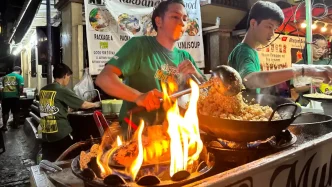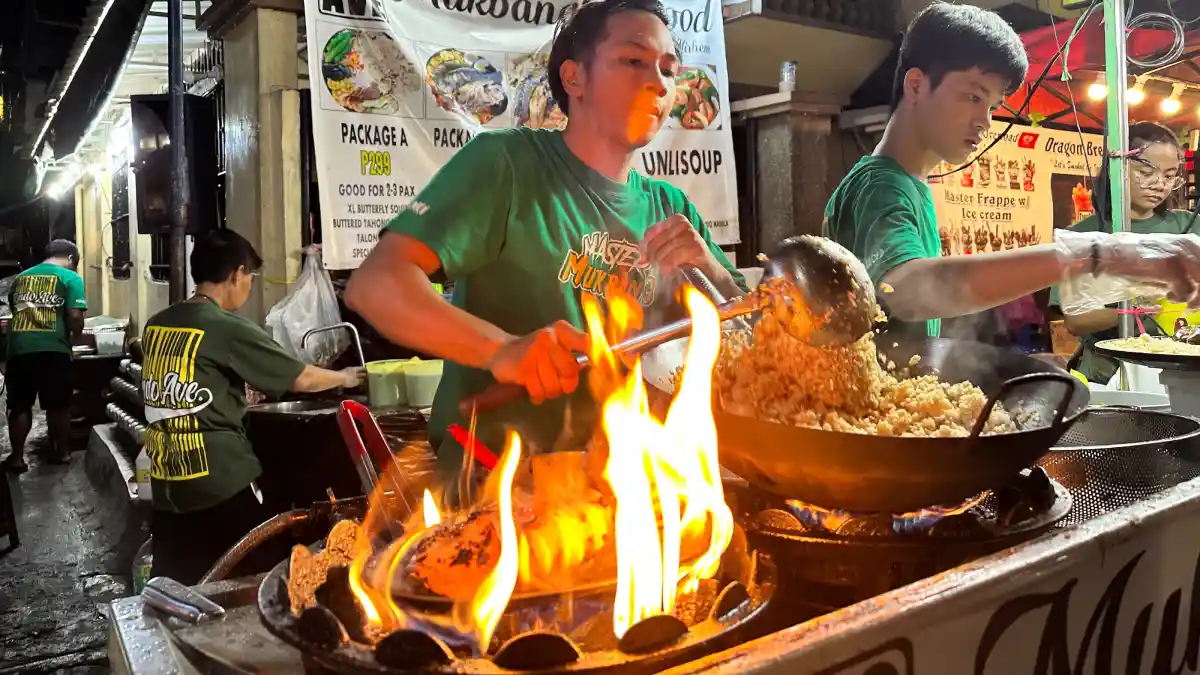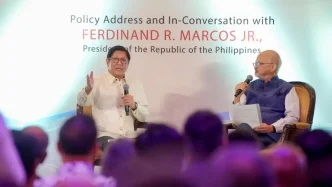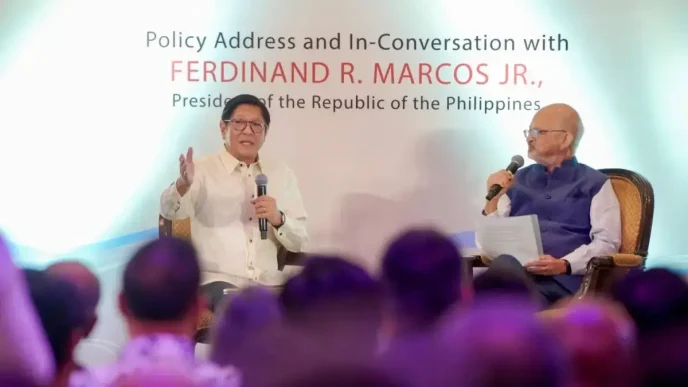In the bustling heart of Manila’s Quiapo district, the sharp scent of frying pork lungs cuts through the humid air, drawing a steady stream of customers to Jacklyn Alfaro’s modest stall. For years, her spot on Carriedo Street was a local landmark, a place where hungry passersby could grab a quick, affordable bite. But a recent city-wide clean-up campaign has uprooted her livelihood, pushing her to a less-trafficked side street and sparking a wider debate about the role of street vendors in the Philippine capital’s urban fabric.
A City in Transition
On June 30, 2025, Manila Mayor Francisco Moreno launched a sweeping policy to clear major roads of street vendors, aiming to restore order to pavements often choked by makeshift stalls. The initiative, which targets key thoroughfares like Carriedo Street, has seen city hall teams dismantle unauthorized setups, prioritizing pedestrian and vehicular access over the informal economy that thrives on these spaces. For vendors like Alfaro, the move to designated vending zones has meant a sharp drop in visibility and income, as foot traffic dwindles in their new locations.
The policy reflects a broader tension in Manila, a sprawling metropolis of over 13 million people, where urban planning struggles to balance modernity with the realities of informal livelihoods. Supporters of Moreno’s directive argue it’s a necessary step to unclog a city where sidewalks frequently double as markets, creating hazards for pedestrians and gridlock for drivers. Yet critics counter that the approach is shortsighted, prioritizing cars over people and ignoring the economic contributions of vendors who form a vital, if often invisible, part of Manila’s social and economic ecosystem.
A Livelihood Under Threat
For many of Manila’s estimated 50,000 registered vendors—alongside countless unregistered “snipers” who evade enforcement—the clean-up has been a devastating blow. Rodrigo, a 22-year-old vendor, saw his daily earnings plummet from 5,000 pesos (~US$90) to just 1,000 pesos (~US$18) after being relocated to a side street. He resists the idea of fixed street seller zones, valuing the flexibility to chase crowds. “I see all the opportunities to make money but they won’t allow it. Being able to sell outside a condo or near public transport is good for my business” he told local reporters in early August 2025.
Alfaro shares a similar frustration. While she has complied with the move to an approved vending area, she yearns for the vibrant chaos of Carriedo Street, where her stall drew a constant stream of customers. Her story is emblematic of a broader displacement cycle in Manila, where vendors are repeatedly pushed out, only to creep back when enforcement wanes, trapped in a limbo of tolerance without integration.
Cultural and Structural Barriers
Unlike neighboring South-east Asian capitals such as Bangkok or Singapore, where street food is celebrated as a cultural cornerstone and tourist draw, the Philippines lacks the infrastructure and societal support to elevate vending into a recognized profession. Jayson Maulit, executive chef and managing partner of Trining’s Kitchen Stories, points to a deep-rooted cultural perception as a key obstacle. “Filipinos have this perception that street food is dirty” he noted in a recent interview, highlighting how street vending is often seen as a desperate measure for survival rather than a craft tied to culinary heritage.
This stigma, coupled with the rise of fast-food chains offering sanitized consistency, has marginalized informal vendors. While Thailand’s street cooks are lauded as artists and Singapore’s hawkers have earned Michelin stars, Manila’s vendors struggle for legitimacy. There is no national body to set standards, reward excellence, or integrate street food into urban planning, leaving vendors vulnerable to policies that treat them as nuisances rather than assets.
Urban planner and landscape architect Paulo Alcazaren, who contributed to the pedestrianization of Singapore’s Orchard Road, argues that Manila’s challenges are not inevitable but the result of decades of fragmented policy and poor execution. In cities like Singapore and Hong Kong, street vending is treated as a permanent economic feature, supported by purpose-built hawker centers with utilities, sanitation, and seating. Governments there regulate hygiene and issue licenses, transforming informal setups into sources of civic pride and tourism revenue. By contrast, Manila relies on sporadic clearing operations without providing viable alternatives. “Although there would be seasonal clearing of the streets, alternatives were not provided for vendors” Alcazaren observed in a discussion with local media in late July 2025.
Localized Successes and Persistent Challenges
Some Philippine cities offer glimmers of hope. In Pasig and Quezon City, near Manila, authorities have designated vending spots in pedestrian corridors and transport terminals, complete with standardized carts, sanitation checks, and safety measures. These systems provide stability for vendors while maintaining accessible public spaces. However, the scale of vending in these areas pales in comparison to Manila’s sprawling informal economy, making replication in the capital a daunting prospect.
Alcazaren notes a critical gap in expertise at the municipal level. He explained that most of the city hall staff are engineers who know how to build roads and bridges and that “fewer areas have anyone with a background in urban design or landscape architecture” he explained. Without specialized knowledge or political will to retrofit spaces for vendors, long-term solutions remain elusive.
One proposal gaining traction in Manila’s ongoing debate is the creation of a permanent food bazaar, akin to Bangkok’s night markets or Singapore’s hawker centers. Such a space would allow vendors to operate legally under a unified system of regulation and infrastructure, while giving customers a reliable destination for street food. Alfaro dreams of Carriedo Street being transformed into such a hub, preserving its historic charm while organizing its chaos. “We envy what they’ve done in Thailand, Taiwan, Singapore, and Hong Kong, where they have proper food bazaars. Why can’t we do the same in Manila?” she asked in a recent conversation with journalists.
Yet Mayor Moreno remains skeptical about the feasibility of concentrating vendors into a single area, citing the sheer number of sellers and the need for sustained enforcement and resources. Without adequate space and political commitment, he argues, such schemes risk becoming unmanageable.
A Broader Debate on Urban Identity
The plight of Manila’s street vendors raises deeper questions about the city’s identity and priorities as it modernizes. Street food, often the most accessible and affordable option for low-income residents, is more than a transaction—it’s a social thread connecting communities in a city marked by stark inequality. Yet its association with poverty and sanitation concerns has kept it on the margins of policy and public imagination.
Critics of the clean-up policy argue it reflects a car-centric vision of urban progress that overlooks the human cost. By pushing vendors to peripheral zones with little foot traffic, the city risks not only economic damage but also the erosion of a vibrant, if messy, part of its cultural fabric. On the other hand, proponents see order and mobility as non-negotiable in a capital straining under the weight of rapid urbanization.
The absence of a robust hawker tradition in the Philippines, as Maulit describes, stems from viewing vending as a lifeline in a crisis rather than a skilled trade. This perception shapes policy, leaving vendors excluded from economic strategies and urban planning frameworks that could harness their potential. Without cultural legitimacy, their contributions—both economic and social—remain undervalued.
Looking Ahead
As Manila grapples with these competing visions of its future, the fate of vendors like Alfaro and Ibanez hangs in the balance. Small-scale experiments in nearby cities suggest that integration is possible, but scaling such efforts to a metropolis of Manila’s size demands vision, investment, and a shift in mindset. Until then, the city’s streets will remain a battleground between order and survival, where the sizzle of pork lungs and the call of vendors are at once a lifeline and a liability.
For now, Alfaro holds onto hope that Carriedo Street—or somewhere like it—might one day become a celebrated food hub, where vendors are not just tolerated but embraced as part of Manila’s soul. Whether that vision can take root in a city wrestling with its own contradictions remains an open question.















